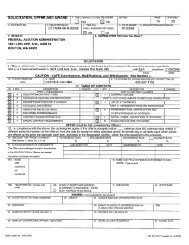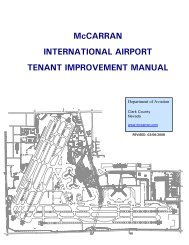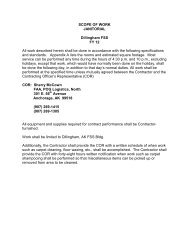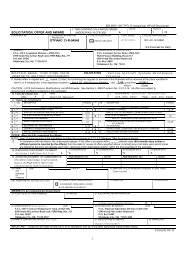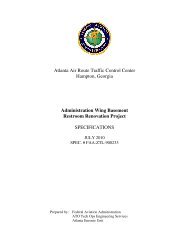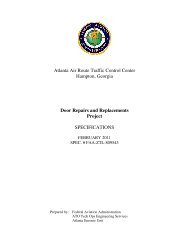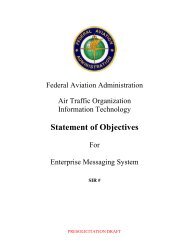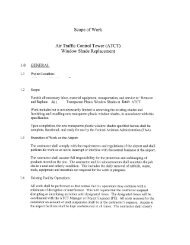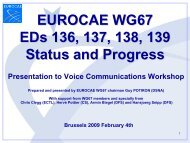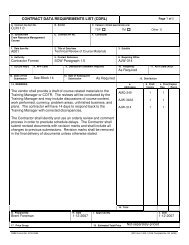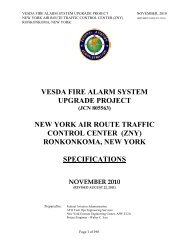specifications - FAACO - Federal Aviation Administration Contract ...
specifications - FAACO - Federal Aviation Administration Contract ...
specifications - FAACO - Federal Aviation Administration Contract ...
Create successful ePaper yourself
Turn your PDF publications into a flip-book with our unique Google optimized e-Paper software.
FTWIC-2235June 2009I. Route and suspend conduit crossing expansion or joints to permit expansion, contraction,and deflection utilizing approved fittings to prevent damage to the structure, conduit, andsupporting devices. Combination expansion/deflection fittings shall be installed onconduits which are concealed when they cross expansion joints. Route conduit throughroof openings for piping and ductwork where possible; otherwise, route through the roofwith pitch pocket. Do not allow conduit to penetrate duct work. Do not install conduitexposed on the roof without prior written permission from the <strong>Contract</strong>ing officersrepresentative.J. Connect motors, equipment containing motors, equipment mounted on isolatedfoundations, transformers, and other equipment and devices which are subject tovibration and which require adjustment with a flexible metallic conduit from the deviceto the conduit serving it. Use liquid-tight where required. The maximum length of theflexible conduit shall be 30", unless specifically instructed otherwise by the <strong>Contract</strong>ingofficers representative in writing.K. Install escutcheons on exposed conduits passing through interior floors, walls andceilings. Install fire seals on conduit passing through fire-rated partitions, floors andceilings. Install galvanized steel pipe sleeves with diameters at least 1/2" greater than theoutside diameter of the sleeved conduit. Fill the annular space with oakum and the endsof the sleeve with fire-resistant compound.L. Install a sleeve for the conduit passing through the interior floors and insulated throatgrounding bushings on conduit which is stubbed through slabs and foundations intoelectrical enclosures.M. Provide grounding for conduit, fittings and accessories.N. Use double locknut construction on conduit which terminates at electrical enclosures, pullboxes, motor terminal enclosures, etc., with an approved bushing over the conduit.Increase the length of the conduit threads at outlets and junction boxes wherevernecessary to accommodate double locknuts and bushings. Seat all bushings fully againstthe end of the conduit. Where knockouts are used, provide double locknuts, one on eachside, and bonding jumpers around concentric knockouts where used. At conduitterminations, provide insulated bushings for conductor protection. Where conduitsterminate in equipment having a ground bus, such as in switchgear and panelboards,provide conduit with an insulated grounding bushing and wire connected to the groundbus.O. Generally, conduit runs shall not be installed in concrete slabs, but shall be installed incushion sand below slabs. Where specifically indicated to be cast into concrete, conduitsshall be schedule 40 PVC and shall be located in the middle between top and bottomreinforcing. Maintain a minimum of 1-1/2" concrete cover at all locations. Themaximum size of conduit permitted to be embedded in slabs is 1". Do not route conduitin a manner to cross each other. Conduit shall have a minimum spacing of 1-1/2" apart.Unless specifically indicated, conduits shall not be placed in slabs on grade. Do notdisplace reinforcing steel to accommodate the installation of raceways and outlet boxes.16111-5 FTWIC-2034



